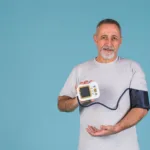
Uncategorized
Home
.
Uncategorized
Categories
Recent Posts
tags
Chronic conditions cost reduction fee for service Healthcare Payers Percentage Population Remote patient monitoring Security Seniors Teleheath value based care
Social Links
-

RPM: A Path to Accessible, Preventive Care
Remote Patient Monitoring (RPM) is fundamentally reshaping chronic care by enabling continuous visibility into a patient’s health between clinical visits. This shift is leading healthcare leaders to adopt RPM to reduce preventable complications and improve long term outcomes. Continuous data…
-

Universal Health Coverage Challenges in the U.S.
Universal Health Coverage requires that every person receives needed care without financial barriers. The concept includes prevention, chronic care, and equitable access across populations. In the United States, this ideal remains difficult to achieve. Institutions navigate complex financing models, uneven…





